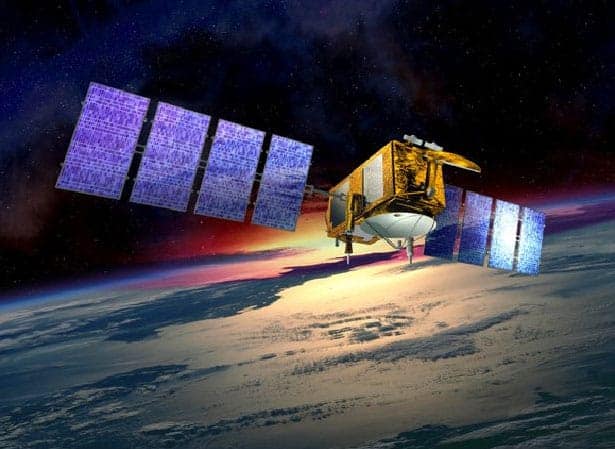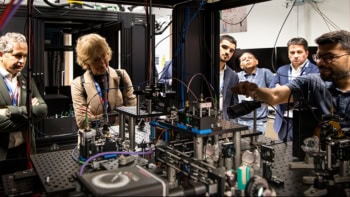
Exchanging messages with almost complete security by exploiting the strange laws of quantum mechanics should in future be possible on a global scale. That is the conclusion of physicists in Italy, who have found that the delicate states needed for quantum cryptography can be transmitted via laser beam from an orbiting satellite to a receiver on the surface of the Earth. The researchers say that the relatively simple technology needed for such encryption could be incorporated into conventional communications satellites.
Quantum cryptography involves two parties sharing a secret key that is created using the states of quantum particles such as photons. The communicating parties can then exchange messages by conventional means, in principle with complete security, by encrypting them using the secret key. Any eavesdropper trying to intercept the key automatically reveals their presence by destroying the quantum states.
Losses and curvature
Such cryptographic systems are already produced commercially, but they use fibre-optic cables. Losses in the cables limit the distance over which quantum keys can be sent to about 100 km, and that distance cannot be increased using repeaters, as is the case with classical data, because it is impossible to carry out the necessary amplification. Alternatively, quantum bits, or qubits, can be transmitted through the atmosphere, but this approach has a similar distance limit imposed by the curvature of the Earth.
This is where satellites could help. A single satellite, for example, could be used to send quantum data to two people on the Earth’s surface to enable those people to share a secret key. To date, however, no device capable of generating or detecting quantum states – such as single photons – has been placed in orbit.
Paolo Villoresi of the University of Padua and colleagues have taken a creative approach to this problem by using the Matera Laser Ranging Observatory in southern Italy. This facility usually directs laser pulses at passing satellites and then measures the reflected pulses in order to measure tiny variations in the Earth’s gravitational field. In 2008 Villoresi’s team worked with a group of physicists at the University of Vienna to bounce very weak laser pulses from a satellite and then show that less than one photon per pulse could be detected on the ground (see “Single photons make the trek from space”).
Polarization is preserved
In this latest research, the Italian group has gone one better, showing that it is possible to preserve the polarization state of those photons. Doing so is essential to quantum cryptography because it is the property of polarization – the orientation of a wave’s oscillation – that is used to define the value of the qubits that make up a quantum key.
The researchers prepared the observatory’s laser photons in one of four polarization states – horizontal, vertical, left-circular or right-circular – and beamed each of the states in 10-second bursts towards five satellites (including NASA’s Jason-2) in orbits up to 2000 km above the Earth’s surface. Their aim was to establish whether or not they could limit the fraction of qubits in each burst that had the wrong polarization after reflection to less than 11%. Above this figure, information theory dictates that no secret key can be established.
Villoresi and colleagues found, as hoped, that the error rates from four of the satellites were in single-figure percentages. These satellites employ corner-cube retroreflectors with metallic coatings, which are needed to preserve polarization states. The fifth satellite has uncoated retroreflectors and generated error rates of about 40%.
“Our results prove that quantum-key distribution from an orbiting terminal and a base station is not only a promising idea but nowadays is realizable,” the researchers write.
Rotation on the fly
The tests did not involve the satellites transmitting qubits that could be used to make actual quantum keys, since the polarizations of the qubits were determined on the ground. But the researchers say that a straightforward modification of existing retroreflectors could make quantum-key generation a reality. All that is needed, they say, is to add a device known as a Faraday rotator and a random-number generator to each retroreflector in order to rotate the polarization of incoming photons on the fly.
Scientists in China have already developed a satellite that will generate quantum keys, and plan to launch it next year. This mission will create entangled pairs of photons in space and then send the two halves of each pair simultaneously to two communicating parties on the ground. The retroreflector-based scheme, on the other hand, involves transmitting the key to each user separately. According to Villoresi, the latter approach will be much cheaper and easier to implement and, he says, could “piggyback” on satellites due to be launched anyway.
The research will be described in Physical Review Letters and a preprint of the paper is available on arXiv.



